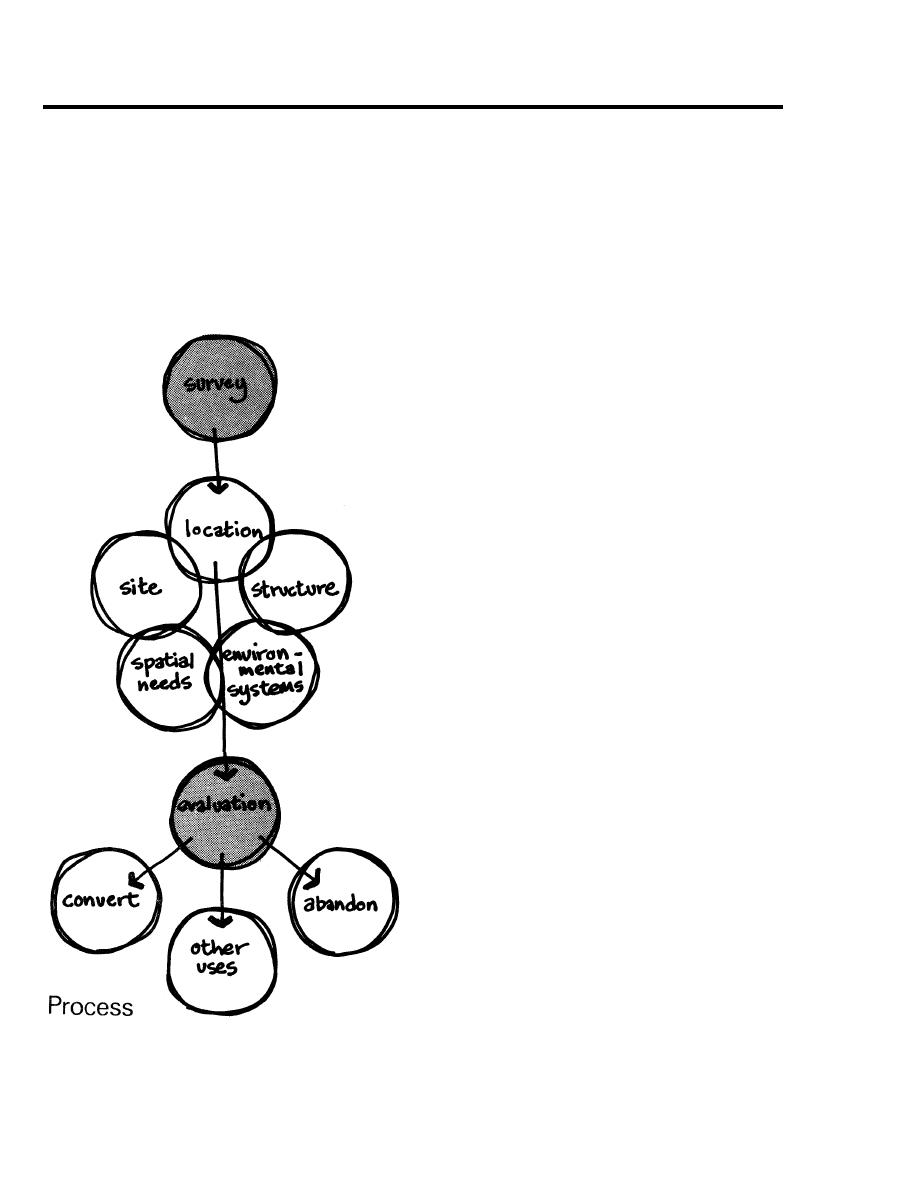
Page 20
DG 1110-3-126
August 1976
cost for a complete building. The percentages Iisted are
typical and taken from construction cost indices. They
may vary depending on local or special factors.
In most cases, a visual inspection by a knowledgeable
g.
surveyor, can result in a numerical value being assigned to
the percentage acceptable for each element. Those ele-
ments that are entirely acceptable are assigned a value, or
"feasibility factor" of 100. Those that require modifica-
tions are given lower numbers as are judged appropriate.
These are entered in column 3.
h. Column 4 provides an "Actual Value Factor". It is
determined by multiplying columns 2 and 3, and dividing
by 100. The total of all actual value factors produces an
overall value factor which offers a useful yardstick in
approximating the relative worth of an existing facility
compared to a new structure. One rule of thumb is that
if the overall value factor is over 50% it would be reason-
able to pursue in greater detail the economic feasibility of
converting its space. Simplified, that means, the existing
facility in its present state is worth half that of a new
physical facility. A sample evaluation is shown on the
chart.
i.
If the proposed facility has passed this test of accept-
ability, the next step is to establish preliminary cost esti-
mates for bringing the building to a state of usefulness for
its new function. This usually requires the preparation of
conceptual design drawings and an analysis of the useful-
ness of the converted space. Experience has shown that if
a building is converted to another use, it will usually have
to be larger than a building designed specifically for this
use, because of inherent problems of fIexibility and struc-
tural limitations.
Following the preparation of a program, a conceptual
j.
design response to it, and a preliminary cost estimate,
some valid judgments can be made on the advisability of
converting space. Obviously, if the cost of the conversions
are high in ratio to the Overall Value Factor the econom-
ics of conversion are highly suspect.
k. The initial cost of construction or of conversion
should not be the only economic criteria for decision
making. Life-cycle costing is a method of determining the
economic feasibility of facilities taking into account the
useful life expectancy of a converted facility against a new
one. It recognizes that initial cost is only one, and by no
means the largest, expense in a building's life. Operating
and maintenance costs are also considered. By amortizing
all costs over the life expectancy of a facility, a compara-
tive economic evaluation prorated on an annual basis can
be established. This then can form the foundation for eco-
nomic decisions.



 Previous Page
Previous Page
